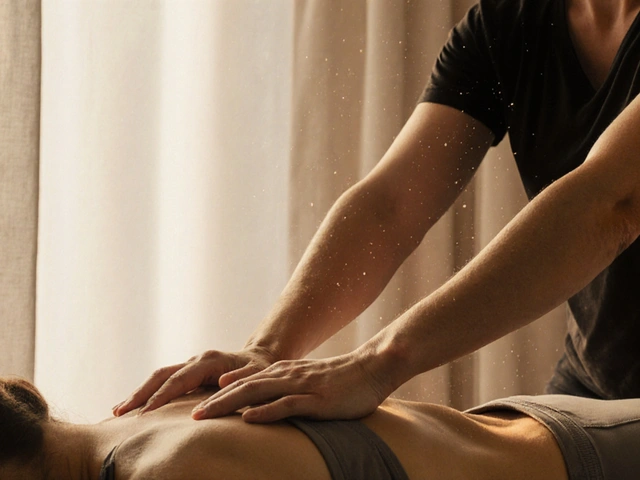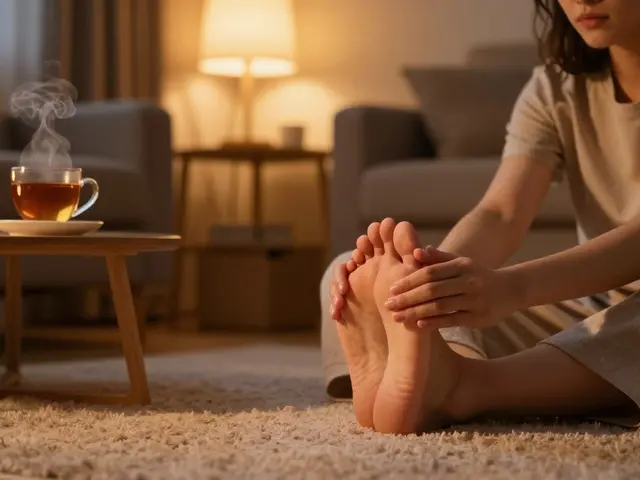Chronic Pain: Practical Massage & Bodywork Solutions
Chronic pain steals energy and focus. It’s not just aching — it changes how you move, sleep, and feel every day. If you’re tired of one-size-fits-all advice, this page gives clear, usable options that actually help: hands-on therapies, simple self-care moves, and when to step up to medical or surgical care.
Effective hands-on therapies
Trigger point massage targets the tight knots that radiate pain; a few focused sessions can reduce pain and improve motion. Structural work like Hellerwork or Rolfing aims to change posture and reduce long-term strain — useful when pain ties to misalignment or scoliosis. Feldenkrais and movement-based methods teach safer movement patterns so you don’t keep re-irritating tissues.
Gentle systems such as Ortho-Bionomy and bioenergetics work with your nervous system to ease pain without forcing tissues. Traditional approaches — hilot, Lomi Lomi, Amma, and Laos massage — combine rhythmic touch and relaxation to reduce muscle guarding. For persistent joint stiffness, newer options like contractual tendon release are discussed in our posts as a medical route when conservative care stalls.
Quick self-care moves that help today
Do these at home between sessions. Use a tennis ball between your shoulder blades and a wall for 1–2 minutes to ease mid-back knots. For a tight neck, place thumbs at the base of the skull and apply gentle circular pressure for 30–60 seconds — stop if pain spikes. Try a short Feldenkrais-style pelvic tilt: lie on your back, bend knees, rock pelvis slowly 8–10 times to retrain movement without strain.
Acupressure can be done anywhere: press the web between thumb and index finger for 30–60 seconds to ease tension headaches. Warm stone techniques or a warm bath increase circulation and loosen tight muscles before stretching. If you use cups or deeper work, have a trained therapist show the first session so you avoid bruising or overwork.
Palliative massage helps when pain comes with illness — it focuses on comfort, easing anxiety and improving sleep rather than fixing structure. If daily pain limits life, look for therapists experienced in chronic conditions, not just relaxation massage.
When you read our site pieces — from trigger point and cupping to Rolfing and tendon release — pay attention to which method matches your pattern: muscle knots, posture issues, nerve pain, or joint stiffness. That helps you pick the right therapist or try safe self-care first.
Know the red flags: sudden weakness, numbness, fever, rapid loss of function, or bowel/bladder changes need urgent medical review. If conservative care stalls after weeks of consistent work, ask about imaging or specialist referral. Surgery or procedures can help in specific cases, but start with guided bodywork and clear progress goals.
Want targeted reads? Check our guides on trigger point therapy, Hellerwork, Rolfing for scoliosis, Feldenkrais, and palliative massage to match the right approach to your pain. Small, consistent steps often bring the biggest changes.

Ortho-Bionomy: A New Hope for Chronic Pain Sufferers
Ortho-Bionomy is shaking up how people deal with chronic pain, swapping harsh treatments for gentle, body-led movements. This article digs into what makes Ortho-Bionomy different and how it taps into the body's natural healing instincts. If you've tried everything from painkillers to deep tissue massages, this might just be the gentle breakthrough you’re looking for. Get ready for some real facts, plenty of tips, and some honest talk about what to expect. The hope here is simple: less pain, more freedom.

Unlocking Relief: Fascia Stretching Techniques for Chronic Pain Management
Fascia stretching is more than just a trend; it's a vital part of maintaining flexibility and alleviating discomfort in our connective tissues. Often overlooked, fascia plays a crucial role in our mobility and pain levels. This article explores practical fascia stretching techniques and how they can help manage and relieve chronic pain. Readers will find insights into the benefits of targeted stretching interventions and learn how to safely implement them as part of their daily routine.
Categories
- Health and Wellness (148)
- Alternative Therapies (86)
- Massage Therapy (40)
- Travel and Culture (15)
- Beauty and Skincare (9)
- Holistic Health (8)
- Health and Fitness (5)
- Spirituality (5)
- Other (2)
- Personal Development (2)



